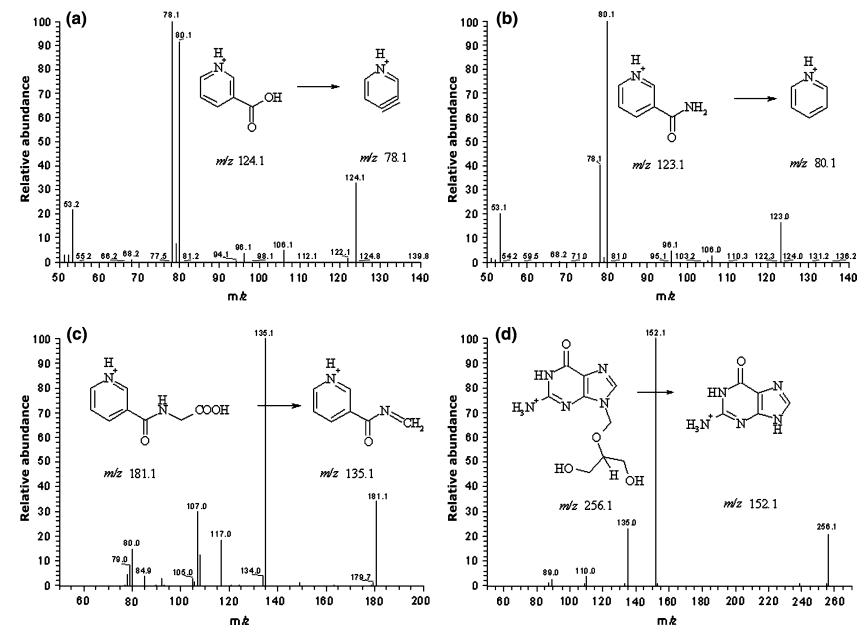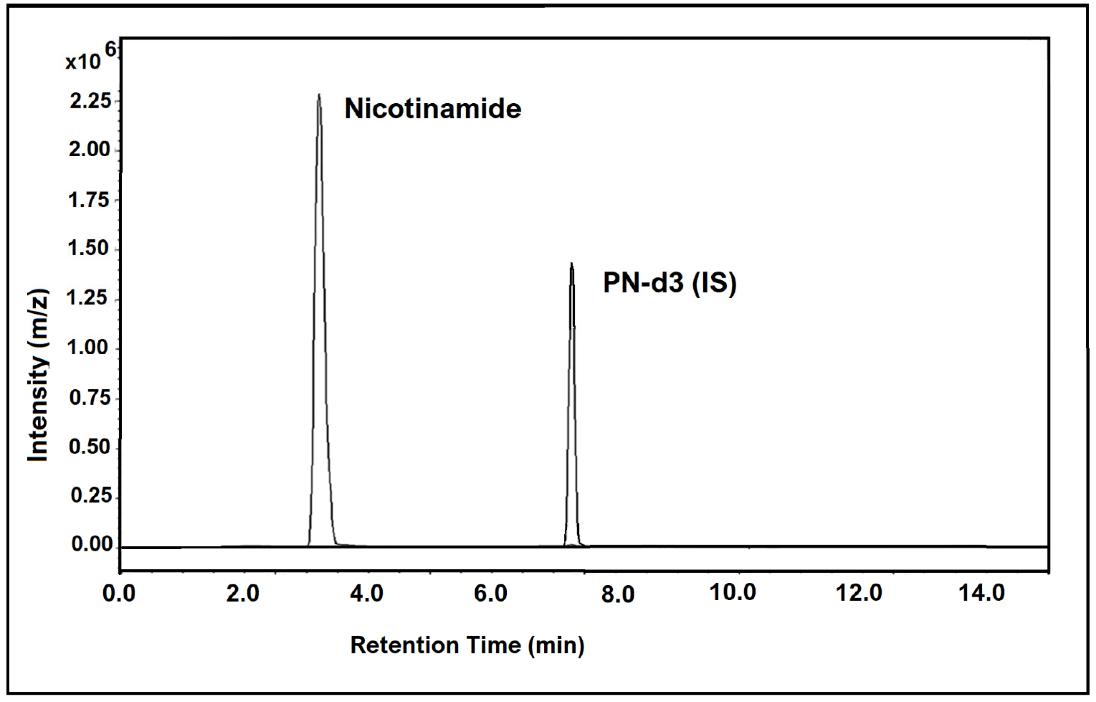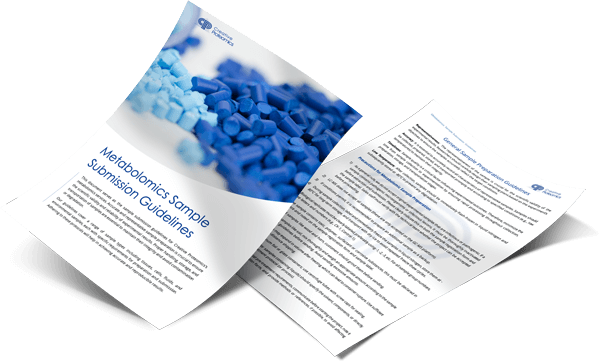Nicotinamide Analysis Service
Creative Proteomics offers comprehensive biological analysis services, including metabolomics, proteomics, lipidomics, and pharmaceutical analysis. utilizing advanced technology platforms such as hplc, lc-ms/ms, and gc-ms, we deliver precise quantification, component identification, quality control, and stability studies. our customized solutions cover everything from sample testing to data interpretation, catering to the diverse needs of the pharmaceutical, food, cosmetic, and research industries, ensuring reliable and compliant results.
Submit Your Request Now
×- Define
- What We Provide
- Technology Platforms
- Sample Requirements
- Demo
- FAQs
- Case
- Publications
What is Nicotinamide?
Nicotinamide, also known as nicotinic acid amide, is a form of vitamin B3. It is a water-soluble vitamin widely found in various foods, such as meat, fish, nuts, legumes, eggs, and grains. In the human body, nicotinamide can be converted into nicotinamide adenine dinucleotide (NAD), a coenzyme essential for numerous enzymatic redox reactions, including the electron transport chain, the citric acid cycle, and glycolysis.
Nicotinamide plays a crucial role in cellular physiology by supporting the redox balance of NAD+ and serving as a substrate for enzymes that catalyze non-redox reactions. Additionally, nicotinamide exhibits anti-inflammatory properties, helping to alleviate skin inflammation, which makes it widely used in skincare products to improve skin health and slow aging.
Nicotinamide has also been studied for its potential in treating and preventing certain diseases, such as diabetes, skin lesions, and neurodegenerative disorders. It is considered a safe supplement and typically does not cause the "flushing" side effect associated with nicotinic acid.
Nicotinamide Analysis Services Offered by Creative Proteomics
Quantitative Nicotinamide Analysis: Accurate determination of nicotinamide concentration in different sample matrices (biological fluids, tissues, food, and cosmetics).
Nicotinamide Derivatives Identification: Identification and quantification of nicotinamide-related metabolites, including NAD+, NADH, and NADP.
Purity Testing and Quality Control: Ensuring the purity of nicotinamide in pharmaceutical and nutraceutical products to meet regulatory standards.
Stability Studies: Assessing the stability of nicotinamide under various conditions, including temperature, pH, and light exposure.
Customized Analysis Solutions: Tailored analytical approaches to meet specific client needs, including method development and validation.
Technology Platforms for Nicotinamide Analysis
High-Performance Liquid Chromatography (HPLC): Provides high-resolution separation and quantification of nicotinamide in complex matrices. Ideal for routine analysis with high sensitivity and precision.
- Instrument: Agilent 1290 Infinity II HPLC System
Liquid Chromatography-Tandem Mass Spectrometry (LC-MS/MS): Offers superior specificity and sensitivity for nicotinamide and its derivatives. Suitable for trace-level detection in biological and pharmaceutical samples.
- Instrument: Thermo Scientific Q Exactive Plus

Agilent 1290 Infinity II LC System (Figure from Agilent)

Thermo Scientific Q Exactive Plus (Figure from Thermo)
Sample Requirements for Nicotinamide Analysis
| Sample Type | Matrix/Description | Minimum Volume/Weight | Preservation Method | Notes |
|---|---|---|---|---|
| Blood Serum/Plasma | Human or animal serum/plasma | 100 µL | Store at -80°C | Collect in EDTA or heparin tubes |
| Whole Blood | Fresh or frozen blood | 200 µL | Store at -80°C | Anticoagulants recommended |
| Urine | Human or animal urine | 500 µL | Store at -80°C | First-morning urine preferred |
| Saliva | Human saliva | 200 µL | Store at -80°C | Avoid contamination with food or beverages |
| Tissue Samples | Liver, brain, muscle, skin, etc. | 50 mg | Freeze in liquid nitrogen, store at -80°C | Homogenize if possible |
| Cell Pellets | Cultured cells (e.g., 1 x 10⁶ cells) | 1 mg (wet weight) | Store at -80°C | Wash with PBS to remove medium |
| Food Samples | Processed or raw food (e.g., grains, meat) | 1 g | Store at -20°C | Seal in airtight container |
| Beverages | Nutritional drinks, juices, or milk | 500 µL | Store at -20°C | Store in a sterile tube |
| Cosmetic Products | Creams, lotions, serums | 2 g | Room temperature or refrigerate | Protect from light |
| Pharmaceutical Products | Tablets, capsules, powders | 50 mg | Room temperature, protect from light | Ensure sample is homogeneous |
| Plant Extracts | Leaf, root, or seed extracts | 100 mg | Freeze-dry or store at -80°C | Specify solvent used in extraction |
Demo
FAQ of Nicotinamide Analysis
What factors could affect the accuracy of nicotinamide analysis results?
Several factors can impact the accuracy of nicotinamide analysis, including:
- Sample Integrity: Degradation of nicotinamide due to improper storage (e.g., exposure to heat or light) can affect results.
- Matrix Interference: Complex sample matrices (e.g., biological fluids) may contain compounds that interfere with nicotinamide detection. Our advanced purification techniques help mitigate this.
- Sample Preparation: Inadequate homogenization or contamination during preparation can lead to inconsistent results. We ensure meticulous sample handling to maintain integrity.
- Instrument Calibration: Regular calibration of analytical instruments (e.g., HPLC, LC-MS/MS) is essential for maintaining precision. We follow strict quality control protocols to ensure accurate measurements.
Can you handle large batches of samples for high-throughput nicotinamide analysis?
Yes, our laboratory is equipped to handle large batches of samples with high-throughput capabilities. Using automated sample preparation systems and efficient analytical workflows, we can process hundreds of samples simultaneously without compromising data quality.
What quality control measures do you implement during nicotinamide analysis?
We adhere to rigorous quality control (QC) protocols, including:
- Use of Standards and Blanks: Inclusion of certified reference standards, calibration curves, and blank samples to ensure accuracy and detect contamination.
- Duplicate Analysis: Running duplicate or triplicate samples to confirm reproducibility.
- Instrument Validation: Regular maintenance, calibration, and performance checks of all analytical instruments.
- Internal Controls: Spiking samples with known quantities of nicotinamide to verify recovery rates and accuracy.
Do you offer method validation for nicotinamide analysis?
Yes, we offer comprehensive method validation services following industry standards (e.g., ICH, FDA guidelines). Our validation process covers:
- Specificity and Selectivity
- Accuracy and Precision
- Linearity and Range
- Limit of Detection (LOD) and Limit of Quantitation (LOQ)
- Stability Testing: Method validation ensures that our analysis meets regulatory and scientific requirements for your specific application.
Can you analyze nicotinamide derivatives, such as NAD+, NADH, and NADP?
Yes, we offer specialized analysis of nicotinamide derivatives, including NAD+, NADH, NADP+, and NADPH. These derivatives play key roles in cellular redox reactions and energy metabolism. Our LC-MS/MS platform allows for precise quantification and differentiation between oxidized and reduced forms. We also offer customized extraction methods to preserve the integrity of these sensitive molecules.
How do you handle samples that have low nicotinamide concentrations?
For samples with low nicotinamide concentrations, we use concentration and enrichment techniques to enhance detection:
- Solid-Phase Extraction (SPE): Removes impurities while concentrating the target analyte.
- Liquid-Liquid Extraction (LLE): Effective for isolating nicotinamide from biological or chemical matrices.
- Optimization of Instrument Parameters: Adjusting sensitivity settings on LC-MS/MS to detect trace levels.
Our optimized protocols ensure accurate results, even for samples with very low nicotinamide levels.
Learn about other Q&A.
Nicotinamide Analysis Case Study
Publications
Here are some publications in proteomics research from our clients:

- Bacterial–fungal interactions revealed by genome-wide analysis of bacterial mutant fitness. 2021. https://doi.org/10.1038/s41564-020-00800-z
- Multiomics of a rice population identifies genes and genomic regions that bestow low glycemic index and high protein content. 2024. https://doi.org/10.1073/pnas.2410598121
- Thermotolerance capabilities, blood metabolomics, and mammary gland hemodynamics and transcriptomic profiles of slick-haired Holstein cattle during mid lactation in Puerto Rico. 2024. https://doi.org/10.3168/jds.2023-23878
- Mechanisms underlying neonate-specific metabolic effects of volatile anesthetics. 2021. https://doi.org/10.7554/eLife.65400
- Sex modifies the impact of type 2 diabetes mellitus on the murine whole brain metabolome. 2023. https://doi.org/10.3390/metabo13091012









